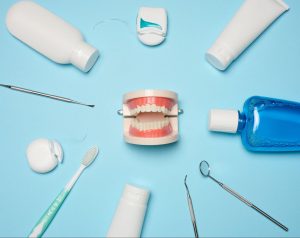Healthy teeth contribute to more than just a confident smile. They play a vital role in eating, speaking, and overall health. Protecting teeth from decay is crucial, especially for children and individuals prone to cavities. Dental sealants offer a proven, effective way to shield vulnerable teeth from damage. Incorporating them into your oral care routine can make a difference in maintaining a healthy smile.
What Are Dental Sealants?
Dental sealants are thin, protective coatings made from plastic or resin. They are applied to the chewing surfaces of molars and premolars, which are especially prone to decay. This coating creates a barrier that prevents bacteria and food particles from settling in teeth’ grooves. Sealants’ primary function is to stop cavities before they form. Brushing and flossing are essential but can’t always effectively clean deep pits and fissures. Sealants fill these areas, ensuring no harmful substances linger to cause decay.
How Do Dental Sealants Work?
Sealants work by bonding to the tooth’s enamel and sealing its surface. The smooth and durable coating prevents plaque from accumulating in hard-to-reach areas. Once applied, the sealant protects the tooth from acids produced by bacteria in the mouth. Even though sealants are not a substitute for brushing or flossing, they provide an added layer of defense. They reduce the risk of cavities in the teeth most vulnerable to decay. That’s why dentists often recommend them as a preventive measure for children and adults.
How Are Dental Sealants Applied?
Applying dental sealants is quick, painless, and straightforward. It is typically performed during a routine dental visit and requires no numbing or drilling. Most patients find the procedure comfortable and stress-free, making it suitable even for children.
Steps in the Application Process
The dental sealant process is quick, often taking only a few minutes per tooth. Once complete, the patient can return to their normal activities without delay. Here’s how it works:
- Cleaning the Tooth: The dentist thoroughly cleans the tooth to remove debris or plaque.
- Preparing the Surface: A special solution is applied to roughen the enamel slightly, allowing the sealant to bond effectively.
- Applying the Sealant: The liquid sealant is painted onto the tooth, filling the grooves and fissures.
- Curing the Material: A curing light hardens the sealant, making it durable and ready for use.
Benefits of Dental Sealants
Dental sealants are a cornerstone of preventive dental care, offering significant advantages for maintaining oral health. Whether you’re a parent looking to protect your child’s teeth or an adult seeking to prevent cavities, sealants can be a valuable addition to your oral care routine. The benefits extend beyond simple cavity prevention, making them a worthwhile investment in long-term dental health.
Prevents Cavities Effectively
The primary purpose of dental sealants is to prevent cavities, especially in hard-to-reach areas. The chewing surfaces of molars and premolars have deep grooves where food particles and bacteria often accumulate. Sealants create a protective barrier, stopping bacteria from settling and producing harmful acids. By blocking this process, they significantly reduce the risk of tooth decay. This benefit makes sealants particularly effective for children, who are more prone to cavities in their early years.
Long-Lasting Protection
Dental sealants provide durable protection for several years. Once applied, they bond to the tooth enamel and withstand daily wear and tear. With proper care and regular dental check-ups, sealants can last up to 10 years. Even as they wear down, they still offer some protection until replaced. Their long-lasting nature makes them a cost-effective option for preventive dental care.
Cost-Effective Preventive Measure
Dental sealants are a much more affordable option than the expense of treating cavities. Fillings, root canals, and crowns can be costly and time-consuming. Sealants, however, require a one-time application at a fraction of the cost. The savings can be significant for families with children, as sealants help avoid future dental procedures. This cost-effectiveness makes them a practical choice for individuals of all income levels.
Safe and Painless Application
Applying dental sealants is a simple, pain-free process that takes only a few minutes. No drilling, numbing, or discomfort is involved, making it ideal for individuals anxious about dental procedures. Sealants are made from biocompatible, safe materials for both children and adults. Modern formulations are free of harmful chemicals, ensuring patient safety and peace of mind. This easy and non-invasive procedure encourages more people to consider sealants as part of their dental care plan.
Reduces Future Dental Complications
Dental sealants help reduce the likelihood of more severe dental issues later in life by preventing cavities. Untreated tooth decay can lead to infections, gum disease, and tooth loss. Sealants act as a first line of defense, minimizing the chances of these complications. Additionally, they make teeth easier to clean, further promoting oral health. This preventive benefit ensures stronger teeth and a healthier smile for years.
The Science Behind Dental Sealants
Dental sealants form a thin, plastic-like shield over the enamel. This shield is created using resin-based or glass ionomer materials, which bond tightly to the surface. Once cured, the sealant acts as a physical barrier, preventing food particles, acids, and bacteria from reaching the enamel.
Material Advancements and Safety Standards
Modern sealants are designed with patient safety and comfort in mind. Many are now BPA-free, addressing concerns about chemical exposure. The durability of these materials ensures long-lasting protection without affecting the tooth’s natural structure.
Research Supporting Effectiveness
Extensive studies back the use of dental sealants. According to the American Dental Association, sealants can reduce the risk of cavities by up to 80% in the first two years. This high efficacy makes them a cornerstone of preventive dental care.
Dental Sealants for Different Age Groups
Dental sealants are not a one-size-fits-all solution. Their benefits vary depending on a person’s age and oral health needs. From children to older adults, sealants can play an essential role in cavity prevention when applied appropriately.
For Children and Teenagers
Children and teenagers benefit most from sealants as their molars and premolars are more susceptible to decay. Newly erupted teeth, particularly, have immature enamel, making them vulnerable. Sealants provide timely protection during these critical years.
For Adults With Cavity-Prone Teeth
While sealants are often associated with young patients, adults can also use them. Applying sealants can prevent further decay if an adult has deep grooves or a history of cavities. That is particularly helpful for those who may not have received sealants in childhood.
Older Adults and Special Considerations
Sealants can also benefit older adults who face oral health challenges like weakened enamel or gum recession. Though not as commonly applied in this group, sealants can still be effective in specific cases, depending on the individual’s needs.
Dental Sealants vs. Other Preventive Measures
Preventive dentistry includes a range of practices and treatments to stop problems before they start. Sealants complement other methods like fluoride treatments and cleanings, offering targeted protection for specific areas of the teeth. Understanding their unique advantages helps you make informed decisions for better oral health.
Sealants vs. Fluoride Treatments
Fluoride treatments help remineralize enamel and protect the entire tooth surface. Sealants, in contrast, provide a physical shield over the grooves and pits of molars and premolars. Both work together, with fluoride strengthening the enamel and sealants blocking decay in hard-to-reach areas.
Sealants vs. Regular Cleaning
Regular dental cleanings remove plaque and tartar, reducing the risk of decay. However, they don’t provide a long-term barrier against future buildup. Sealants complement cleanings by ensuring protection between dental visits.
Cost Comparison
While sealants may seem like an additional expense, they are far less costly than restorative treatments like fillings or crowns. Their preventive nature makes them a worthwhile investment in overall oral health.
How to Talk to Your Dentist About Dental Sealants
Discussing dental sealants with your dentist can help you make the best choice for your oral health. Being proactive about your questions ensures you understand their benefits, costs, and maintenance requirements. Open communication leads to better decisions and peace of mind.
Start With Questions About Suitability
When visiting your dentist, ask if your teeth or your child’s teeth are good candidates for sealants. Mention any concerns about deep grooves, frequent cavities, or other factors that might make sealants a valuable addition.
Discuss the Procedure and Safety
Understanding the process can alleviate concerns. Ask your dentist to explain how the application works, whether the sealant materials are BPA-free, and how long they typically last. It can help you feel confident in your decision.
Clarify Cost and Insurance Coverage
Dental insurance often covers sealants for children under a certain age, but coverage for adults may vary. Discuss potential costs upfront and ask about alternative payment or financing options if insurance doesn’t cover the procedure.
Follow Up on Maintenance
Sealants require periodic checks to ensure they remain intact. Ask your dentist how often they should be evaluated and what steps you can take to prolong their lifespan. Regular visits also help identify any signs of wear, ensuring prompt reapplication if needed.
What Makes Dental Sealants the Key to Healthier Smiles
Your family’s smiles deserve the best protection against cavities and decay. Dental sealants provide an effective, straightforward solution to keep teeth healthy and strong. Choosing dental sealants isn’t just about prevention—it’s about empowering yourself and your loved ones with a proactive approach to lifelong dental wellness. Discussing this option with your dentist can open the door to a future of better oral health. Your smile deserves the care and confidence dental sealants can provide, ensuring a healthier and brighter future for years.
Visit our Meader Family Dentistry blog for expert insights and tips to brighten your smile.






